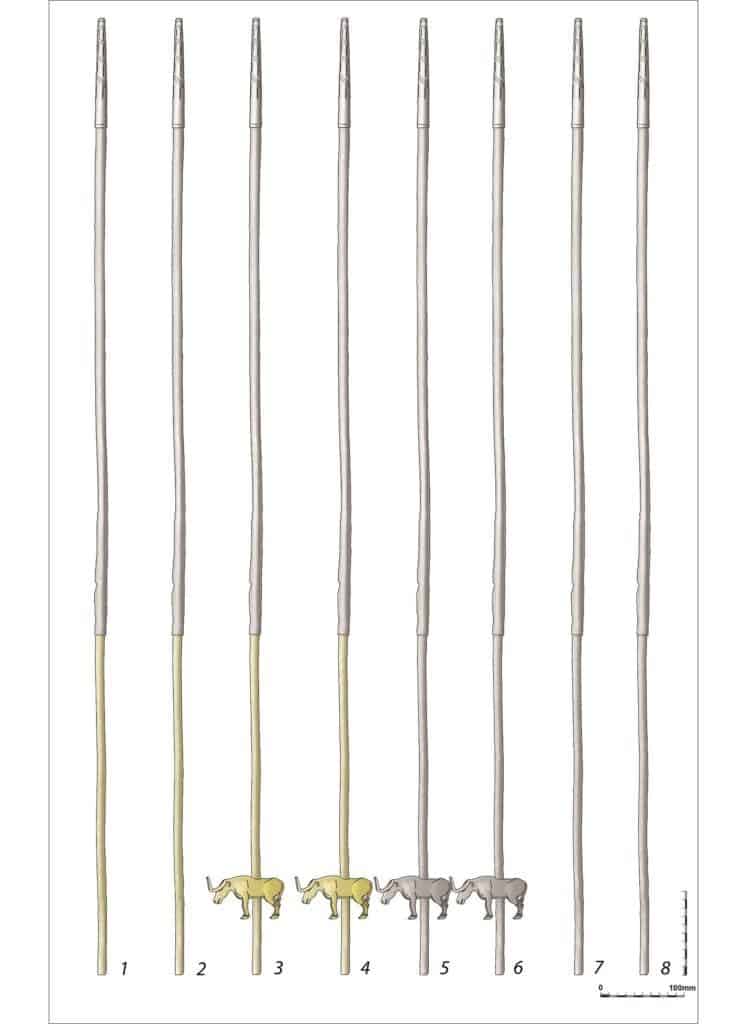
More than a hundred years ago, archeologists found eight ancient tubes made of silver and gold inside a large Bronze Age burial mound in the Caucuses. Some of the artifacts, which are over 5,000 years old, have bull figurines on the stem, which has invited speculation that they are scepters reserved for the elite. But now Russian scientists claim that the tubes were likely used to drink beer from a communal vessel, making them the oldest drinking straws identified thus far.
“Party like a Sumerian”
The metal tubes were first excavated in 1897 by a team of archeologists led by Professor Nikolai Veselovsky of St Petersburg University in a huge mound located on the outskirts of Maikop, a small town in the north-western Caucasus, right on the edge of the steppe. The tubes were found inside one of three separate compartments of a large chamber of the burial mound, or kurgan. The chamber contained the skeleton of an adult in a crouched position covered in the remains of a richly decorated garment, along with hundreds of beads of semi-precious stones and gold, ceramic vessels, precious metal cups, weapons, and tools.

All of these valuable artifacts were arranged along the walls of the burial chamber, except for a set of eight 0.7-meter-long, thin gold and silver tubes. They are now on display at the Hermitage Museum in St Petersburg and, until recently, their purpose has been a matter of contention. But a new analysis by researchers led by Dr. Viktor Trifonov from the Institute for the History of Material Culture at the Russian Academy of Sciences in St Petersburg shows the ‘scepters’ are actually straws used to drink beer.
“A turning point was the discovery of the barley starch granules in the residue from the inner surface of one of the straws. This provided direct material evidence of the tubes from the Maikop kurgan being used for drinking,” said Trifonov in a statement.

In their new study published today in Antiquity, and aptly named “Party like a Sumerian: reinterpreting the ‘scepters’ from the Maikop kurgan”, the authors compare the kurgan tubes to long straws depicted in Sumeria from the 3rd millennium BCE onwards. These long straws were placed in large communal vessels, allowing people to share a drink from the same container.
Like Sumerian straws, the Maikop tubes have metal strainers designed to filter out impurities, which are common in ancient beer. A large vessel was found in the Maikop Kurgan whose volume could hold enough beer for eight drinkers to each have seven pints.
“If the interpretation is correct, these fancy devices would be the earliest surviving drinking straws to date,” said Trifonov.

Good customs travel far
The location of the burial mound where the tubes were found is hundreds of kilometers away from the other earliest evidence of drinking straws in Mesopotamia. Although far away, cultural exchange and trade may have spread the practice of communal drinking between Mesopotamia and the Caucasus civilizations.
The findings also shed light on the Maikop culture, which must have had close ties with its rich southern neighbors and must have had a wealthy elite of its own. We know that drinking ceremonies in ancient Sumeria were typically reserved for royal funerals. The thin tubes along with other prized artifacts found so close together in the burial of a high-status individual suggest the same practices also took place among Bronze Age civilizations in the Caucasus region.
“Before having done this study, I would never have believed that in the most famous elite burial of the Early Bronze Age Caucasus, the main item would be neither weapons nor jewelry, but a set of precious beer-drinking straws,” said Trifonov.






